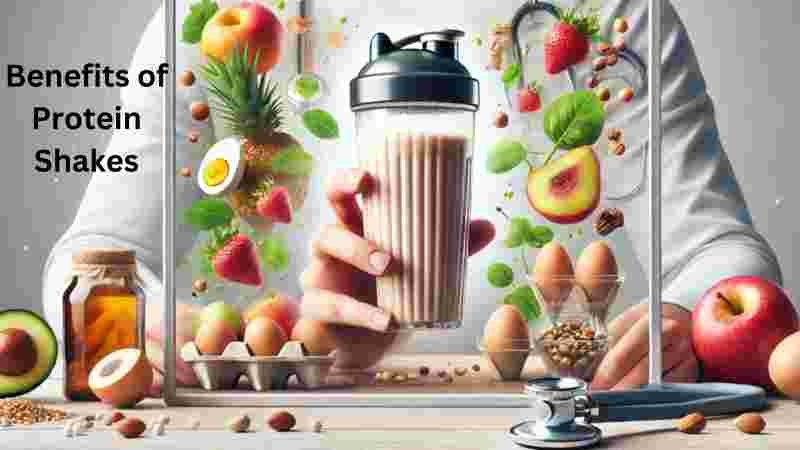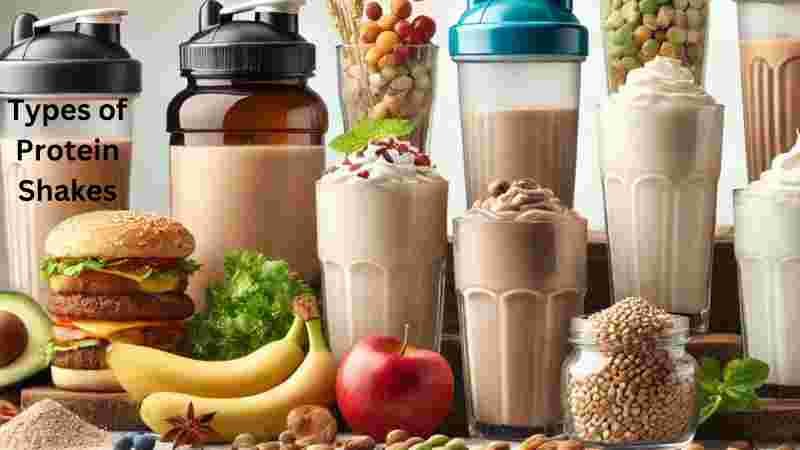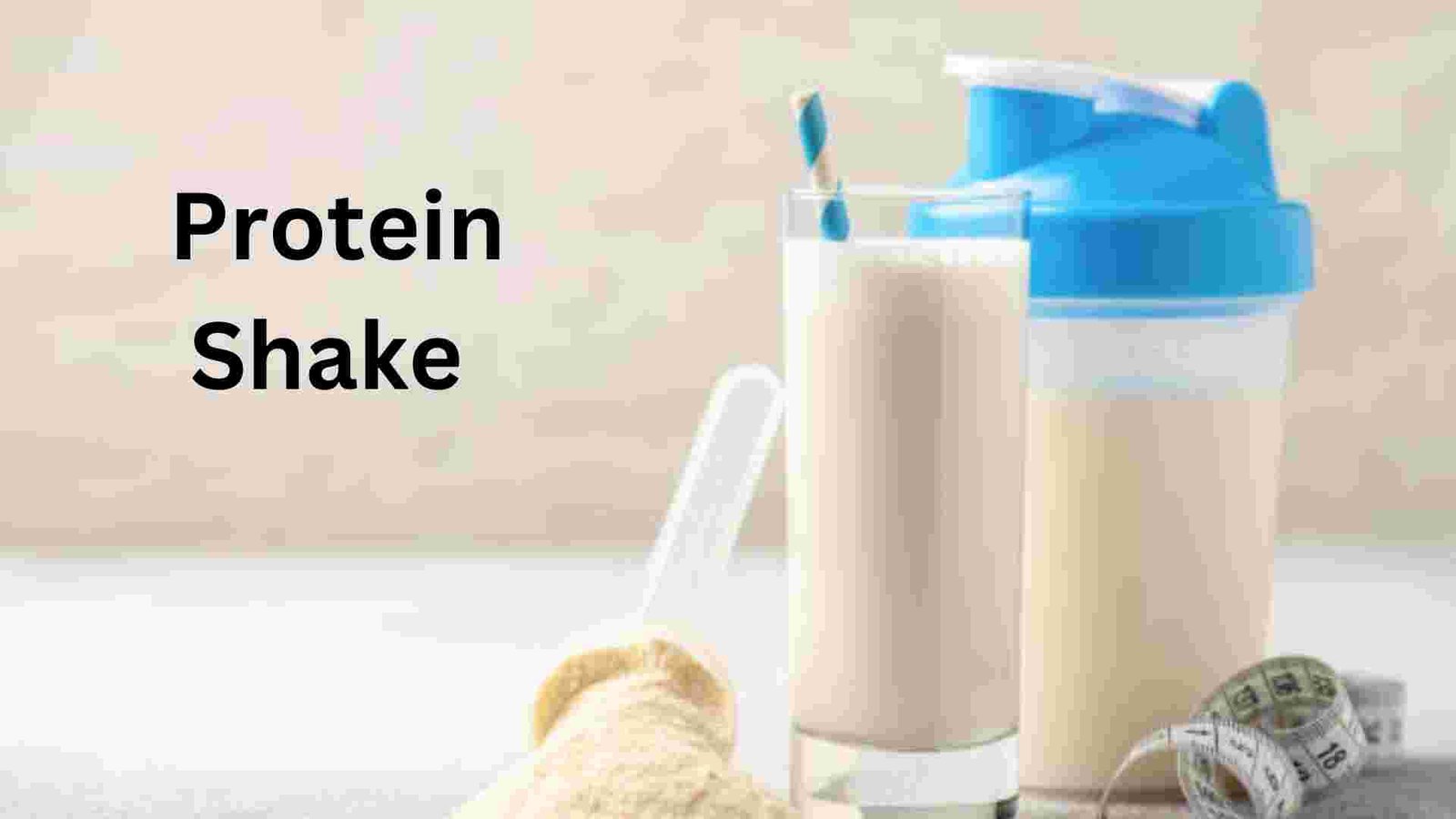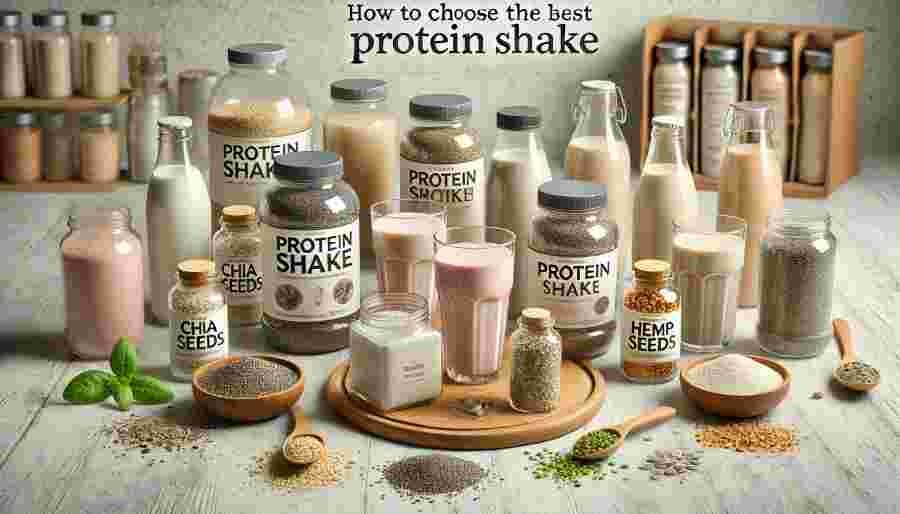What Is a Protein Shake?
A Protein shake is a beverage designed to provide a concentrated source of protein, which is one of the essential macronutrients needed by the body for growth, repair, and overall health. Typically, protein shakes are made by mixing protein powder with water, milk, or plant-based liquids such as almond milk or oat milk. These shakes are often consumed by athletes, fitness enthusiasts, or anyone looking to increase their protein intake quickly and conveniently.
Definition of a Protein Shake
At its core, a protein shake is a liquid meal or supplement that delivers a specific amount of protein in an easily digestible form. Protein powders used in these shakes are derived from various sources, including dairy, plants, or eggs, and are processed into fine powders that mix well with liquids. While protein shakes are often associated with fitness and bodybuilding, they can benefit a variety of people, from those recovering from surgery to older adults needing more protein to maintain muscle mass.
Common Ingredients Found in Protein Shakes
While the primary ingredient in a protein shake is protein powder, these shakes can contain other ingredients depending on the brand, type, and personal preference. Common ingredients include:
- Protein Sources: Whey protein, casein protein, soy protein, pea protein, hemp protein, and rice protein are a portion of the famous choices.
- Sweeteners: Natural or artificial sweeteners such as stevia, sucralose, or sugar to improve taste.
- Fats: Some shakes include fats like MCT oil or coconut oil for additional energy and creaminess.
- Fiber: Adding ingredients like chia seeds, flaxseeds, or oats for better digestion and to promote satiety.
- Vitamins and Minerals: Many protein shakes are fortified with vitamins (like vitamin D or B12) and minerals (such as calcium or magnesium) to enhance nutritional value.
- Flavors and Additives: To make them more palatable, protein shakes often come in flavors like chocolate, vanilla, strawberry, or banana, along with natural or artificial flavorings.
How Protein Shakes Fit Into a Balanced Diet
Protein shakes can play a key role in a balanced diet when used correctly. They offer a convenient and efficient way to meet daily protein needs, especially for those who struggle to consume enough protein through whole foods. Here’s how they fit into a healthy eating plan:
- Meal Supplement: For individuals who don’t have time to prepare a full meal, a protein shake can serve as a quick, nutrient-dense snack or meal replacement, especially when paired with healthy fats and fiber.
- Post-Workout Recovery: After exercise, the body requires protein to repair and build muscle tissues. A protein shake, especially when consumed within 30 minutes post-workout, can expedite muscle recovery and promote growth.
- Weight Management: Protein shakes can help individuals manage their weight by providing a high-protein, low-calorie option that promotes fullness and reduces overall caloric intake.
- Supplementing Deficient Diets: For vegetarians, vegans, or those with dietary restrictions, protein shakes can help bridge the gap if they are not getting enough protein from food sources alone.
Key Takeaways
- Protein shakes can help with muscle recovery, growth, and weight management, making them a versatile tool in fitness and health.
- There are several types of protein shakes available, including whey, casein, and plant-based options, allowing individuals to choose based on their preferences and dietary restrictions.
- Timing matters when consuming protein shakes, with many benefits coming from drinking them post-workout or as a meal replacement.
- It’s important to choose a protein shake that aligns with your fitness goals and nutritional needs, and not all protein shakes are created equal.
- While protein shakes are beneficial, they are not a magic solution. They should complement a well-rounded diet rich in whole foods.
Benefits of Protein Shakes

Protein shakes have become a staple in the diets of athletes, fitness enthusiasts, and health-conscious individuals alike. They offer a convenient and efficient way to increase protein intake, essential for various bodily functions, muscle growth, and overall health. Here are the primary benefits of incorporating protein shakes into your diet:
Muscle Recovery and Growth
One of the most well-known benefits of protein shakes is their role in muscle recovery and growth. After an exercise, your muscles need protein to fix the minuscule tears that happen during exercise. Protein shakes, especially those made with fast-digesting proteins like whey, provide a quick and efficient way to deliver amino acids to your muscles when they need it most.
- Supports muscle repair: Consuming a protein shake post-workout helps repair muscle fibers that were stressed during exercise. This leads to stronger, larger muscles over time.
- Advances muscle blend: Amino acids from the protein shakes are the structure blocks of muscle tissue, assisting with invigorating muscle protein combination, which is fundamental for muscle development.
- Reduces soreness: Drinking protein shakes after exercise can help reduce delayed onset muscle soreness (DOMS), allowing for faster recovery and better performance in subsequent workouts.
Weight Management
Protein shakes can likewise assume a significant part in weight the board. Whether you are attempting to lose or keep up with weight, protein shakes offer a few advantages:
- Increases satiety: Protein is known to be more satiating than carbohydrates or fats, meaning it helps you feel fuller for longer. Drinking a protein shake as a bite or feast substitution can lessen desires and forestall indulging.
- Supports lean muscle mass: When you lose weight, it’s important to preserve muscle mass. Protein shakes provide the necessary nutrients to maintain muscle while burning fat, keeping your metabolism running efficiently.
- Boosts metabolism: Building and maintaining lean muscle requires more energy than fat tissue, meaning the more muscle you have, the more calories your body burns even at rest. Protein shakes help in muscle retention and growth, indirectly supporting weight loss efforts.
General Health Benefits
Beyond fitness goals, protein shakes offer general health benefits that can improve overall well-being:
- Supports immune function: Proteins are crucial for the production of antibodies and other immune cells. Adequate protein intake, supported by protein shakes, can help strengthen the immune system.
- Promotes healthy skin, hair, and nails: Protein is a fundamental component of collagen, which is vital for maintaining the health of skin, hair, and nails. Drinking protein shakes can contribute to a radiant appearance and improve the strength of nails and hair.
- Enhances bone health: Protein is also essential for bone health. Consuming protein shakes can support bone density and reduce the risk of osteoporosis, especially in older adults.
Types of Protein Shakes

Protein shakes come in various forms, each offering different benefits based on your dietary preferences, fitness goals, and health needs. Let’s explore three of the most common types of protein shakes: whey protein, plant-based protein, and casein protein. Each type serves a unique purpose and can be tailored to fit individual lifestyles.
Whey Protein: Benefits and Drawbacks
Whey protein is one of the most well known and generally utilized protein sources. It is gotten from cow’s milk during the cheddar making process, where whey is confined from curds.Whey protein is known for its high bioavailability, meaning the body can ingest and use it effectively.
Benefits of Whey Protein:
- Quick retention: Whey protein is immediately processed, making it ideal for post-exercise utilization when your body needs a prompt wellspring of protein for muscle fix.
- Complete protein: Whey contains every one of the nine fundamental amino acids, making it a total protein source. This guarantees it upholds muscle recuperation, development, and upkeep really.
- Supports muscle growth: Due to its high leucine content, an amino acid critical for muscle protein synthesis, whey protein is highly beneficial for those looking to build muscle mass.
- Boosts immune function: Whey protein contains immunoglobulins, which may support immune health by enhancing the body’s ability to fight infections.
Drawbacks of Whey Protein:
- Lactose intolerance issues: Since whey comes from dairy, people with lactose intolerance may experience digestive discomfort, such as bloating, gas, or diarrhea. However, lactose-free versions like whey protein isolate can minimize this issue.
- Unfavorably susceptible responses: People with dairy sensitivities might have to stay away from wahey protein through and through.
- May not be sustainable: As whey is derived from animals, it may not align with environmental sustainability goals or ethical preferences for some consumers.
Plant-Based Protein: Options and Who They Are Best For
Plant-based protein shakes are made from various plant sources, such as peas, hemp, soy, rice, and chia seeds. These protein sources are ideal for people following vegetarian, vegan, or dairy-free diets. While plant-based proteins are typically lower in some essential amino acids compared to animal-based proteins, many are now formulated as blends to provide a complete amino acid profile.
Options for Plant-Based Protein:
- Pea protein: Made from yellow peas, this option is hypoallergenic and easy to digest. It’s rich in essential amino acids like lysine.
- Hemp protein: Hemp protein contains omega-3 fatty acids and fiber, making it a great choice for those looking to improve digestion and cardiovascular health.
- Soy protein: As a complete protein source, soy protein contains all essential amino acids. It’s popular among vegans and vegetarians and can support muscle growth similar to whey.
- Rice protein: Rice protein is hypoallergenic and delicate on the stomach related framework. However, it’s lower in the essential amino acid lysine, so it is often combined with other proteins to enhance its nutritional value.
Who Plant-Based Protein Is Best For:
- Vegans and vegetarians: Those who avoid animal products find plant-based protein shakes an excellent alternative to whey or casein protein.
- People with dairy or gluten sensitivities: Plant-based proteins are typically free from common allergens like lactose and gluten.
- Environmental and ethical considerations: Many people choose plant-based proteins for environmental reasons, as plant farming typically has a lower carbon footprint than animal farming.
Drawbacks of Plant-Based Protein:
- Incomplete protein: Some single plant proteins (like rice or pea) may not provide all the essential amino acids, but blends of multiple plant proteins can create a complete amino acid profile.
- Texture and taste: Some people find plant-based protein powders to be grainier and less palatable compared to whey or casein. However, the flavor and texture of these shakes have improved significantly in recent years.
- Lower bioavailability: Plant-based proteins are generally less bioavailable than animal-based proteins, meaning the body absorbs them less efficiently. However, this can be mitigated by consuming a variety of protein sources.
Casein Protein: When to Consume and Its Benefits
Casein protein is another protein derived from milk, but unlike whey, it is absorbed more slowly by the body. Casein shapes a gel in the stomach, prompting a more slow arrival of amino acids into the circulation system, making it ideal for supported protein conveyance over a more drawn out period.
When to Consume Casein Protein:
- Before bedtime: Casein’s slow-digesting nature makes it a great choice to consume before sleep. This helps provide a steady release of amino acids throughout the night, supporting muscle repair and growth during periods of fasting.
- During long periods without food: If you know you’ll be without food for an extended period, such as during long work hours or travel, casein can help maintain muscle protein synthesis and prevent muscle breakdown.
Benefits of Casein Protein:
- Sustained amino acid release: Casein’s slow absorption rate makes it ideal for maintaining muscle protein synthesis over an extended period. This is particularly useful for those looking to preserve lean muscle mass.
- Advances satiety: The sluggish processing of casein can assist with controlling craviang by keeping you feeling full for longer, making it a decent choice for those attempting to deal with their weight.
- High in calcium: Casein protein is naturally high in calcium, which supports bone health and plays a role in various physiological functions like muscle contractions and nerve signaling.
Drawbacks of Casein Protein:
- Not ideal for post-workout: Because casein is digested slowly, it’s not the best option immediately after a workout when your muscles need a quick supply of amino acids for recovery.
- Lactose content: Like whey, casein is a dairy-derived protein, so those with lactose intolerance or dairy allergies may experience digestive issues or need to avoid it altogether.
- Thicker texture: Casein has a naturally thicker texture when mixed into shakes, which may not appeal to everyone.
When to Drink Protein Shakes

One of the most common questions people have when incorporating protein shakes into their diet is when to drink them for optimal results. The timing of your protein shake can significantly impact your performance, recovery, and overall nutrition. Whether you’re drinking protein shakes to build muscle, manage weight, or simply meet your daily protein needs, understanding the best times to consume them can help you get the most out of your fitness journey.
Pre-Workout
Drinking a protein shake before a workout can provide your body with the necessary amino acids and nutrients to fuel your muscles during exercise. Consuming protein before exercise helps prevent muscle breakdown and can enhance performance. Pre-workout shakes are often paired with carbohydrates to give you energy and keep you sustained throughout your session. This combination can help increase endurance and stamina, especially during strength training or high-intensity workouts.
- Timing: In a perfect world, you ought to drink your protein shake 30 minutes to an hour prior to your exercise to permit your body time to process and retain the supplements.
- Benefits: Increased energy, improved muscle recovery, and reduced muscle breakdown.
- Ingredients: Pair your protein shake with a source of carbs like a banana or oats to enhance energy levels.
Post-Workout
The most popular time to drink a protein shake is after a workout. Post-workout protein is critical for muscle recovery, repair, and growth. After exercising, your muscles are in a state where they need protein to rebuild and grow stronger. This is known as the anabolic window, a period of about 30 minutes to two hours after exercise when your body can efficiently use protein for muscle repair.
- Timing: Aim to drink your protein shake within 30 minutes to an hour after your workout. This is when your body needs the nutrients most to begin the repair process.
- Benefits: Enhanced muscle recovery, reduced soreness, and increased muscle growth.
- Ingredients: A basic whey protein shake is ideal, but you can also add fast-digesting carbs like honey or fruit for an added energy boost and faster recovery.
Meal Replacement
Protein shakes can also serve as an effective meal replacement when you’re short on time or need a convenient, nutrient-dense option. This is particularly useful for those managing their weight or looking for a balanced meal on the go. Protein shakes can be enhanced with additional ingredients to ensure you’re getting a well-rounded mix of macronutrients (protein, fats, and carbohydrates) as well as vitamins and minerals.
- Timing: You can consume a protein shake as a meal replacement anytime during the day, whether it’s for breakfast, lunch, or dinner.
- Benefits: Convenient, helps with weight management, and ensures you’re getting adequate protein.
- Ingredients: Add healthy fats like almond butter, a source of fiber like chia seeds, and greens like spinach to create a balanced shake that will keep you full for longer.
How to Choose the Best Protein Shake
Fitness Goals
- Muscle Building: If your primary goal is to build muscle, look for protein shakes that are high in protein and contain all essential amino acids. Whey protein is popular among bodybuilders for its rapid absorption and high concentration of branched-chain amino acids (BCAAs), which are crucial for muscle growth. Aim for shakes that offer about 20-30 grams of protein per serving to maximize muscle protein synthesis.
- Weight Loss: For weight loss, protein shakes can be used as meal replacements. Opt for shakes that are lower in calories but high in protein to help keep you full and satisfied without adding extra calories. Look for shakes that also contain fiber, which aids in digestion and enhances satiety.
- Endurance Training: If you’re an endurance athlete, you might benefit from protein shakes that include a mix of carbohydrates and protein. This combination helps replenish muscle glycogen stores and repair muscle tissues after long sessions. Shakes with a 3:1 or 4:1 ratio of carbohydrates to protein are ideal post-workout.
- General Health and Wellness: If your goal is overall health enhancement, choose a protein shake with a balanced nutritional profile, including vitamins and minerals. These can help supplement your daily nutrient intake especially if you’re not getting enough through your diet.
Dietary Preferences
- Vegan: Vegan protein shakes are typically made from plant-based sources such as pea, hemp, soy, or rice protein. These shakes are ideal for those who follow a plant-based diet but still want to ensure they’re consuming enough protein. Look for vegan protein powders that combine multiple plant sources to provide a complete amino acid profile.
- Gluten-Free: If you’re sensitive to gluten, ensure the protein shake you choose is certified gluten-free. Cross-contamination can be an issue in facilities that process both gluten-containing and gluten-free products, so it’s important to choose products that guarantee a gluten-free status.
- Lactose-Free: For individuals with lactose intolerance, whey protein isolates are an excellent choice as they contain less lactose than whey protein concentrates. Alternatively, plant-based proteins are inherently lactose-free and can be a suitable option.
Nutritional Content
- Protein Type and Quality: Assess the type of protein used—whey, casein, soy, pea, etc.—and its quality. Look for protein shakes that contain essential amino acids, particularly leucine, which plays a key role in initiating protein synthesis.
- Added Sugars and Artificial Ingredients: Be wary of protein shakes that contain high levels of added sugars or artificial sweeteners and flavors. These can detract from the health benefits of a protein shake. Choose products with natural sweeteners like stevia or monk fruit, or those that are unsweetened.
- Calories: Consider the calorie content per serving, especially if you are counting calories or trying to lose weight. A protein shake shouldn’t replace a meal unless it provides a balanced nutritional profile with an appropriate calorie count.
- Vitamins and Minerals: Some protein shakes are fortified with vitamins and minerals to support overall health. These can be particularly beneficial if you have specific nutritional needs or deficiencies.
How to Make a Protein Shake

Basic Recipe
Creating a protein shake is straightforward and customizable to your taste and nutritional needs. Here’s a simple recipe to get you started:
- Protein Powder: Choose a scoop of your preferred protein powder—whey, casein, or a plant-based option.
- Liquid Base: Use about 8-12 ounces of liquid such as water, milk, or a milk alternative like almond, soy, or oat milk for a creamier texture.
- Ice: Add a few ice cubes to make the shake cold and refreshing.
- Blend: Combine all ingredients in a blender and blend until smooth.
Adding Flavors and Ingredients
- Fruits: Bananas, berries, mangoes, or peaches can add natural sweetness and additional nutrients.
- Vegetables: Spinach or kale can be included for a nutrient boost without significantly altering the flavor.
- Nuts and Seeds: Add almonds, flaxseeds, or chia seeds for extra protein, fiber, and healthy fats.
- Flavor Enhancers: Cocoa powder, vanilla extract, cinnamon, or nut butter can enhance the taste of your shake.
Tips for Texture and Consistency
- Thickening Agents: Use a banana or avocado for a thicker, creamier shake.
- Yogurt or Cottage Cheese: Adding a spoonful can improve the protein content and texture.
- Adjust Liquids: Start with less liquid to control the thickness of the shake, adding more as needed to achieve your desired consistency.


